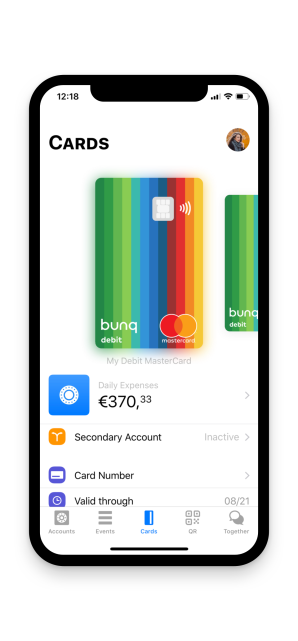Mobile Payments and Mobile Banking in Europe
Categories: Finance
The first smartphone prototype ever developed was called the “Angler”. It was developed by scientist and engineer Frank Canova, while he was working at IBM. Following the Angler came the first ever commercially available smartphone : the IBM Simon. Although very basic, It could make calls, send/receive e-mails and and several other features. It had, however, but a mere fraction of the power and usability that the modern smartphone of today has.
Besides providing the average consumer with games and great apps such as Whatsapp, Facebook and Instagram, for instance, the smartphones of today have revolutionized the world of banking and mobile payments, especially in Europe.
In the very near future, most it not all banking and transactions will be completely online. Some experts suggest that there will be no more ATMS, no more tellers, no more fumbling around with bills or coins. Instead, the user’s bank account is linked directly to an app, with all financial information viewable on a mobile device’s screen. It seems as though the end of cash is near.
Mobile payments and mobile banks are more convenient and arguably safer
What many are discovering is that mobile payments – financial transactions done through any kind of mobile device– are an easier, safer alternative to cash, cheques or credit cards.
The ease with which it can be used includes innovative contact-less features – also known as near field communication (NFC). This is where a phone automatically transmits the money, via a radio frequency, to a point-of-payment device, that only needs to be a few inches away. This streamlines the checkout process, once bogged down by inserting a card and typing in PIN numbers.
Still other advanced features include bar code payments, already utilized by the likes of Trip Advisor, Eventbrite, and many other companies. All the user has to do is flash the bar code on their cell phone to the clients’ handheld reader, and their proof of payment is complete.
Besides simplicity and speed, global access is one of the biggest benefits. It doesn’t matter where the sender or receiver of money is, the money will move, and will move instantly.
Any smartphone made in the past few years can now do whatever a credit card or debit card can do. That means a lighter, and less cluttered, real wallet/purse, without the need for coins, cash, or plastic cards. (It may even make an actual wallet obsolete). Also saves you the hassle of making a call when your PIN or credit card gets stolen while you’re traveling.
What’s most interesting is that Europeans have adopted mobile banking apps quite quickly, and in large numbers.
Mobile banking by the numbers
Merchant Machine (and corroborated by Internet Retailing) reported that at least half of European citizens are using mobile devices for payments and banking. Great Britain, Scandinavia, and the Netherlands, to cite a few examples, each have a significant percentage of their populations using a “digital wallet” or “mobile wallet”. It is widely expected that, much like Sweden’s near-cashless society, other countries on the continent are heading in that direction, too.
By next year, in-store mobile payments globally will reach a half-trillion US dollars, an 80% increase over 2015. By 2022, it is estimated that overall, there will be $14 trillion USD in mobile payment app transactions worldwide.
Nearly all of the household names in the digital sphere – Apple, Samsung, Google – have launched mobile payment apps. Most banks today have an app that allows the user to efficiently send funds, receive funds, and pay for every day items with pretty much a few finger taps.
The major brick-and-mortar Dutch banks, for instance, have upgraded their mobile apps so that users can swipe with “IDEAL checkouts”, at countless stores and shops across the Netherlands. With a simple click of the smartphone, an item is bought and paid for. Adoptees of this technology include recognizable banking establishments as ING and Rabobank.
Depending on an individual’s taste, needs and banking preference, there’s a wide array of mobile payment apps available, everything from the aforementioned household name institutions, to more, innovative industry shaking companies.
Some Examples
One such example is Dutch online bank bunq, in a class of its own as a mobile-only bank, serving customers exclusively through their app. Accounts can be open in as little as five minutes using the app, and users don’t even need to be in the Netherlands to do it. The process is straight-forward: a passport photo taken from the mobile device, a three-second video to verify the account holder’s identity, a texted ID number sent from bunq to validate the account, an address, and a phone number. Boom, an account is born.
With bunq, everything – sending or receiving funds at anytime– is done by the user’s handheld device. With their app, there’s real-time access to the account, which means payments and transfers are made instantly. The icing on top? There’s 24/7 customer service in English, German, Italian and Spanish. It’s not even necessary to enter bank account numbers when moving money to friends and family – all it takes is a phone number or email address. It also features advanced image recognition to enable faster easier payments of bills (acceptgiro)
Finally, for those concerned about safety and security, experts insist that there’s nothing to worry about. Banking apps either utilize high-level encryption, or fingerprint identification, both understood to be better protection than hackable PIN numbers or forged signatures.
Whether it’s transferring funds, paying bills, store purchases, or any other financial transaction, it can now all be done with a finger-swipe on a smartphone. In just a few years, it’s highly likely that the majority of financial transactions around the globe will be cashless, and credit card-less, shifting instead to purely the handheld device.

